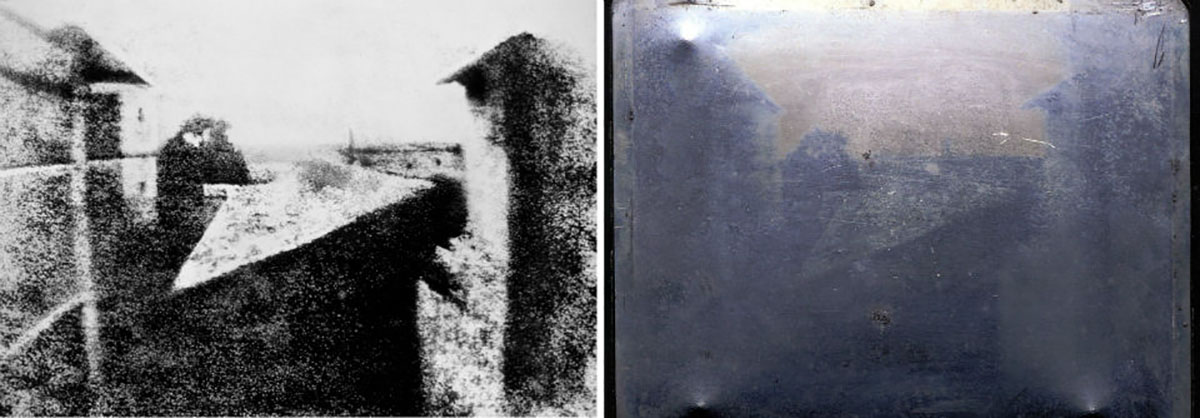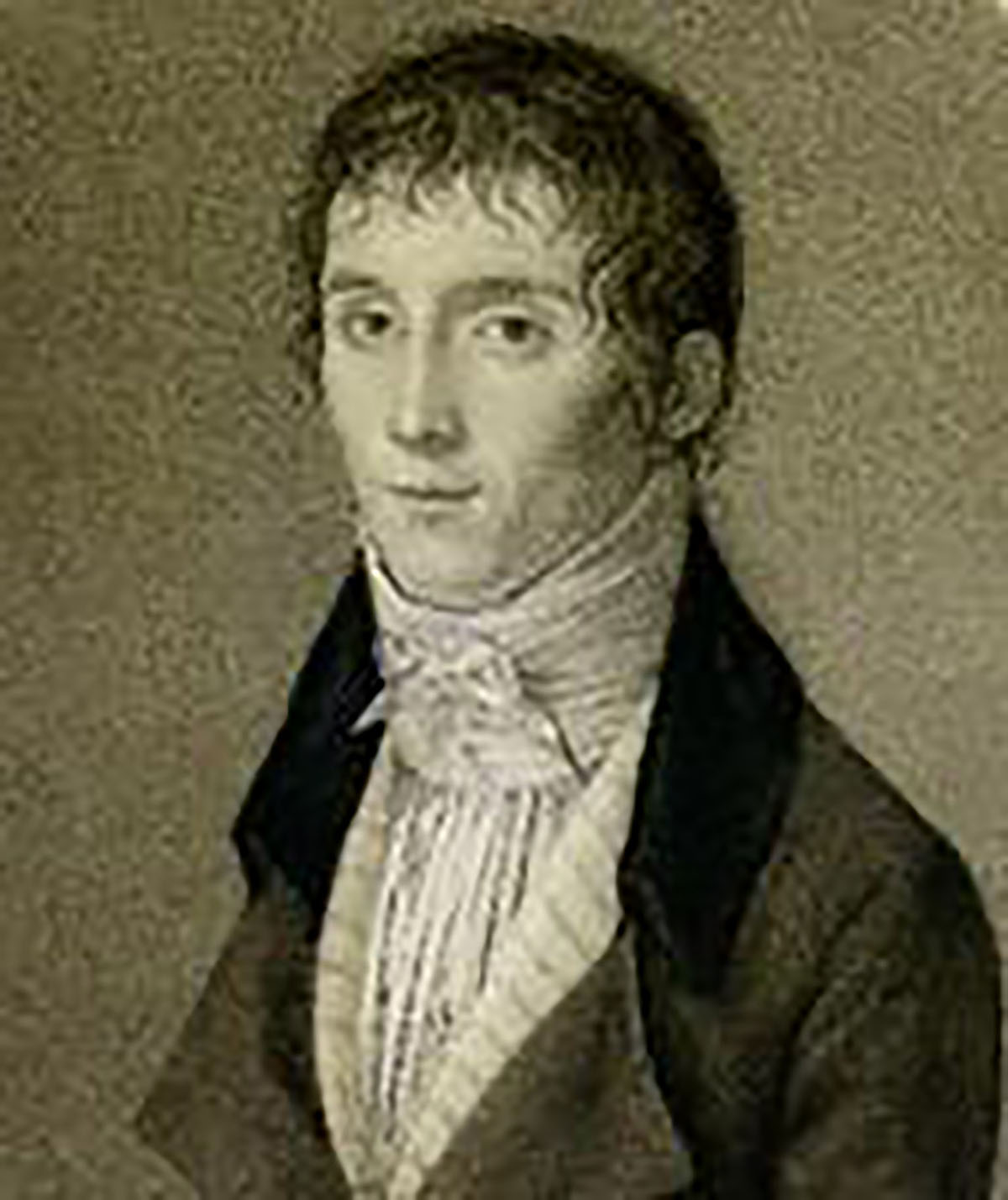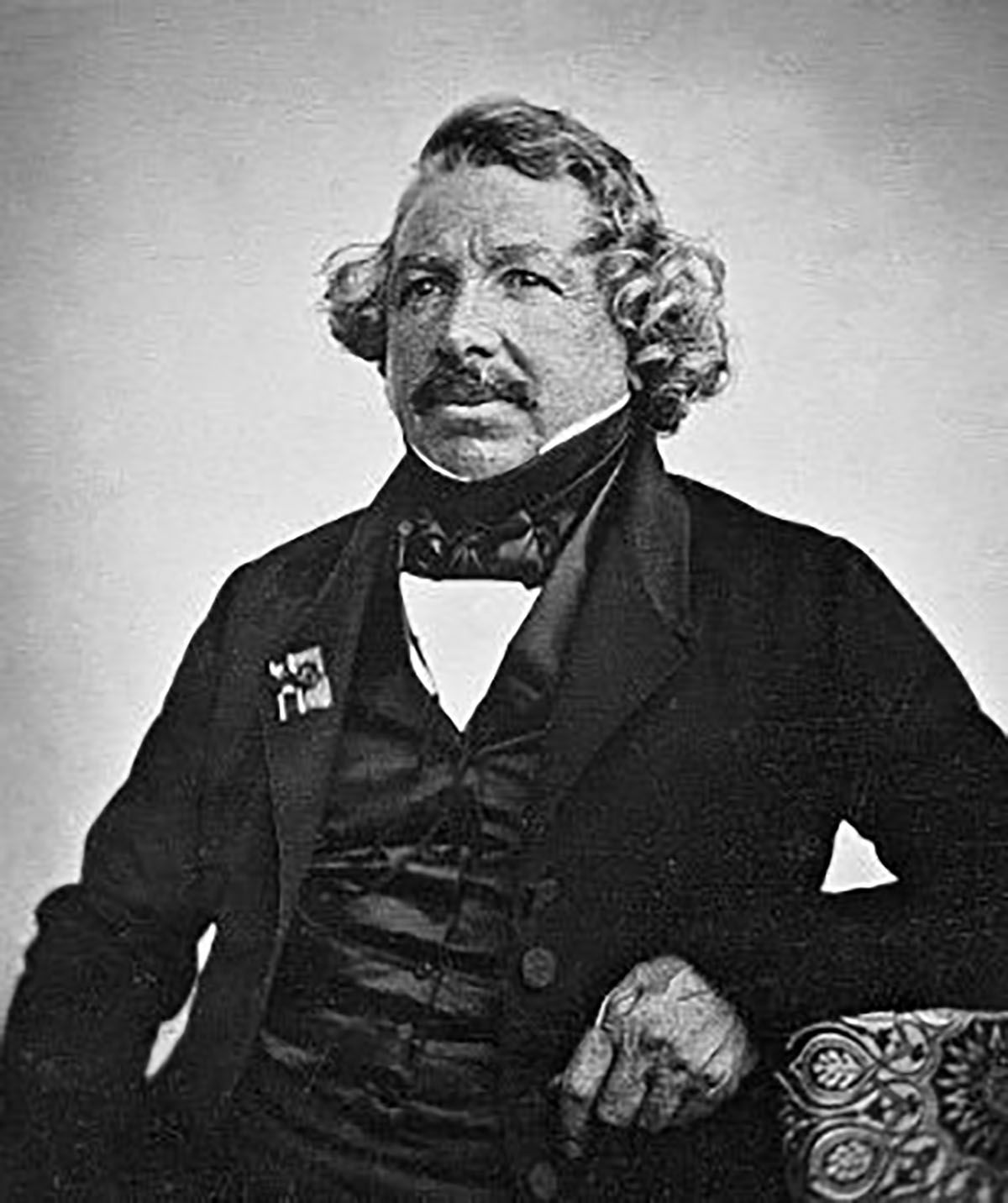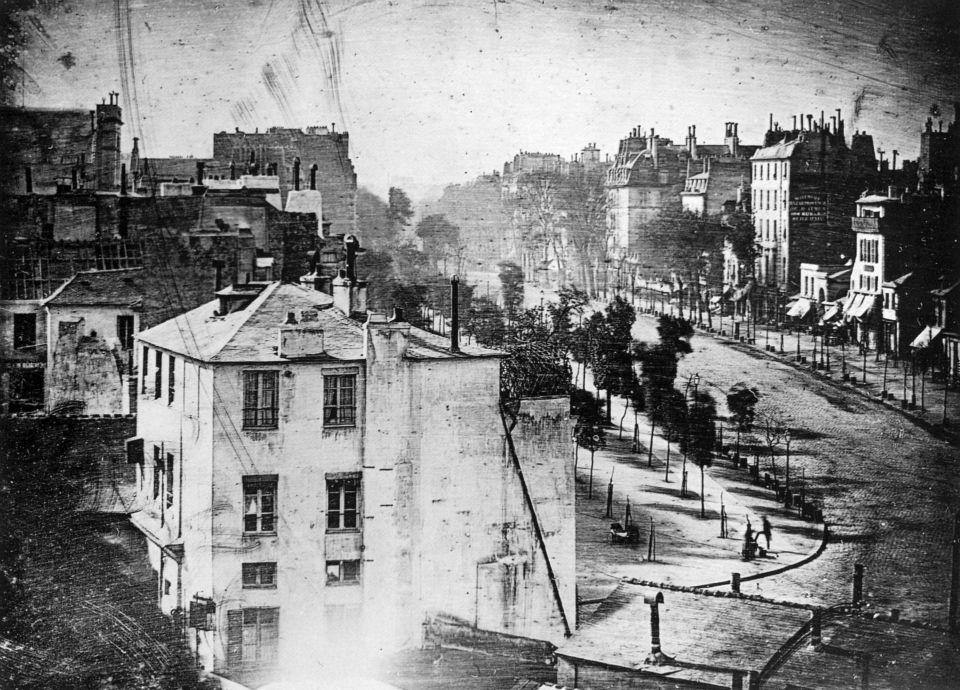
The History of Photography - Part 1:
The First Photographs from 1839 to 1880
It was a Monday, the 19th of August 1839 - the birthday of photography. The Academy of Sciences and the Academy of Fine Arts invited all of Paris to come and see this spectacle. In this first part of our history of photography series, you’ll learn everything there is to know about the camera obscura, which was the first apparatus that allowed people to capture and store images.
The First Photo in the World
Joseph Nicéphore Niépce was able to successfully take and record the first photo in the world with a camera obscura already 13 years prior to the event in Paris mentioned above. The result was the famous heliographic image recorded on a tin plate, “The View from the Window at Le Gras” (French: “La cour du dolmaine du Gras”), which is still completely intact even today. When looking at an edited version of the photo, it’s much easier to recognise the opened window on the left, a pigeon house near that, and a tree in the background. In the middle there is a roof and to the right a chimney. It took eight hours in all to record the image. The light-sensitive tin plate on which the photo was recorded measured 20 x 25 cm in size.In 1829, Niépce joined together with Louis Daguerre to continue work on this concept. Niépce, however, died four years later and Daguerre ended up improving the method by himself until the rendition of the daguerreotype on the 19th of August, 1839 with the help of the Academy of Sciences and the Academy of Fine Arts in Paris.
The Founders of Photography
Joseph Nicéphore Niépce
Portrait of Joseph Nicéphore Niépce [Public domain]
Joseph Nicéphore Niépce was born into the French upper class. Soon after having to leave the French army due to his health, he began to busy himself with the idea of capturing images with the camera obscura. In 1816 he wrote his brother: “I am going to deal with three things: first is to improve the sharpness of the objects being photographed, second is to transfer the objects’ colour, and third is to record the image, which will not be the easiest thing to do. But like you have rightfully said in the past, we do not lack patience, and with enough patience you can accomplish anything.” Until his death in 1833, Niépce strived to discover suitable methods which would make it possible to record and eternalise images with a pinhole camera. He was first successful in his attempts in 1826 with his heliography images “The View from the Window at Le Gras.”. Louis Jacques Mandé Daguerre
Daguerre was already born one generation ahead of Niépce. He first finished his studies in architecture before he was able to develop his skills as a painter at the theatre. His breakthrough came with his invention of the so-called diorama - a shaded, half-transparent playhouse. Due to his work with the camera obscura, he was also interested in the recording of projected images, experimented with the process, and eventually met the acquaintance of Niépce. After Niépce’s death in 1833, Daguerre perfected Niépce’s method of light-resistant photography. This is how the daguerreotype came about, which was first presented to the open public in 1839 and is seen as the birthday of photography.

Daguerreotype
The daguerreotype was the first practical method to permanently record images. All images produced using this method are unique thanks to how they are produced. A modified camera obscura was used and had a slot for a cartridge. This contained an iodine-metallised and silver-coated copper plate that was exposed for approximately 20 seconds. The light-sensitive silver iodide is initially invisible. After recording, the exposed plate is immediately developed using quicksilver vaporisation in a darkroom and fixated with a potassium cyanide solution. The subsequent airtight sealing behind a glass plate protects the quicksilver coating from contact and oxidation. The result is a light-resistant, laterally-inverted light grey image. As successful as this achievement of permanently recording an image was, the method also has two big downsides. The first downside of the daguerreotype is that it is a very expensive form of photography due to the use of the precious metals silver and copper, which made it only accessible to the more affluent echelons of society. Another downside is that the dangerous cyanide and quicksilver fumes led to the early death of many photographers.
Besides the daguerreotype, other photography methods were also developed:
- Heliography (in 1822)
- Talbotype (also called Calotype, in 1835)
- Ambrotype (in 1850)
- Ferrotype (also called Tintype, in 1850)
- Collodion Process (in 1850)
- Wothlytype (1864)
The Rapid Development of Photography After 1840
After the presentation of the daguerreotype in Paris, different methods of photography were developed rapidly all over the world. Portraits of people and landscapes could now be captured more quickly than by painters. Photography also became a useful resource for painters to employ while doing their work. Edouard Manet, Courbet and Gauguin all traded in their sketchbooks for photographic methods to aid them in their painting. In the 1840’s, a photography hype came about and multiple photography ateliers began to open. During this time, an Englishman by the name of William Henry Fox Talbot began developing the “calotype” and applied for a patent. The daguerreotype and the calotype both make use of sunlight in order to create images. These two methods are, however, very different in their applications. While the method developed by Daguerre used plates made of tin (later out of glass) to capture images, Talbot used paper. Even today Talbot’s method is still in use today in a modified form.

In the 1840’s, it was nearly impossible to make copies of photographic images. This was first successfully done in 1851 by Frederick Scott Archer and his “wet collodion process.” This method combined good image quality with cost-efficiency and came to replace the daguerreotype and the calotype methods of the 1840’s. The negative produced by this new process could easily be duplicated. This process, however, was quite arduous since the photographer had to first prepare the light-sensitive plate shortly before exposure and a delicate hand was necessary for the development process that took place shortly thereafter. This process also made it difficult for photographers to be mobile - all of the equipment together weighed more than 100 kilogrammes. From the year 1871, photography began to become more popular thanks to gelatine dry plates. Beginning in 1875, the dry plates were industrially produced and this made photography more and more accessible, especially for amateur photographers. These plates were advantageous to use thanks to the easiness of their storage and the cheaper price tag compared to the wet plates, which made photographing suitable for the masses.
In part 2 of this series, you can read all about the industrialisation of photography and how the photograph made the transition from plates to film rolls.
